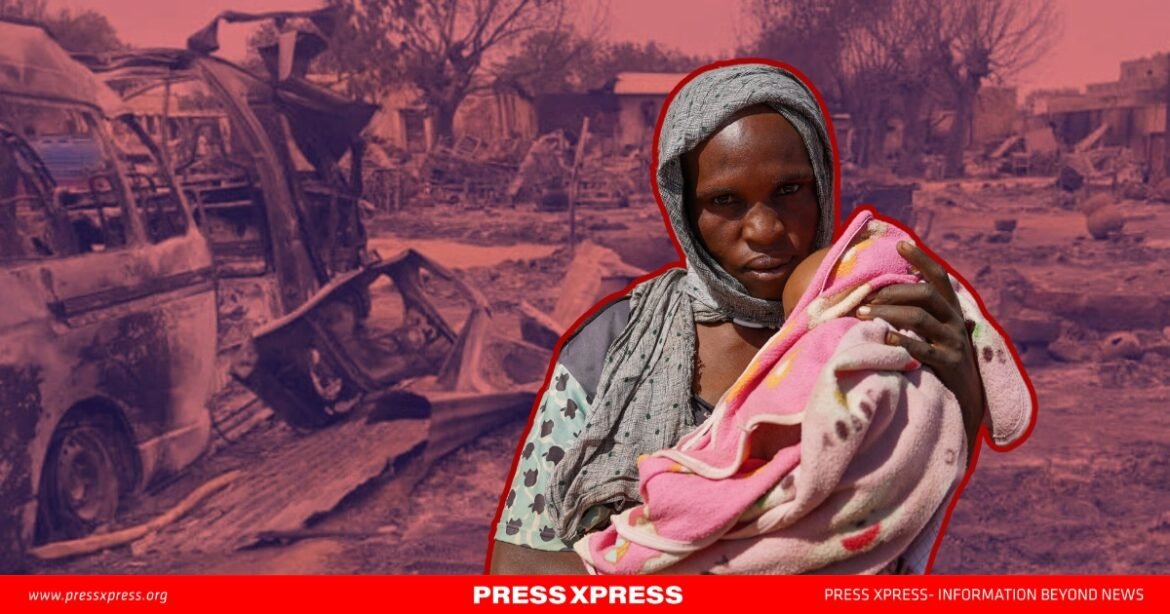The protracted conflict between Sudan’s Armed Forces (SAF) and the paramilitary Rapid Support Forces (RSF) has plunged the nation into a severe humanitarian crisis, with the siege of El Fasher in North Darfur epitomizing the escalating violence and its devastating impact on civilians.
Since April 2023, Sudan has been embroiled in a civil war between the SAF, led by General Abdel Fattah al-Burhan, and the RSF, commanded by Mohamed Hamdan Dagalo. This power struggle has resulted in widespread displacement, famine, and significant civilian casualties. The RSF, originally formed from Janjaweed militias, has been accused of severe human rights abuses, including attacks on non-Arab ethnic groups in Darfur.
El Fasher, the capital of North Darfur, has been under siege by the RSF since May 2024. The United Nations reports that at least 782 civilians have been killed and over 1,143 injured due to relentless shelling and airstrikes. The city’s main hospital has been targeted multiple times, exacerbating the humanitarian crisis.
Timeline of Key Events in El Fasher (2024)
| 10 May 2024 | Clashes between Sudanese Armed Forces (SAF) and Rapid Support Forces (RSF) begin in El Fasher. |
| 20 May 2024 | At least 1,250 people displaced within Al Fasher locality. |
| 2 June 2024 | UNICEF reports over 270,000 people, including more than 130,000 children, at risk due to fighting. |
| 5 June 2024 | RSF storms Wad Al-Noora village in Gezira State, nearly 100 villagers killed. |
| 10 June 2024 | Last operational hospital in El Fasher closes after being stormed and looted by RSF. |
| 14 June 2024 | High-ranking RSF commander killed amidst fierce fighting in El Fasher. |
| 19 June 2024 | Sudan accuses the United Arab Emirates of arming the RSF. |
| 20 June 2024 | RSF captures Al-Fulah, capital of West Kordofan, after SAF withdrawal. |
| 27 June 2024 | Report states over 755,000 people in Sudan face extreme hunger, worst levels of acute food insecurity recorded. |
| 29 June 2024 | RSF captures Singa, capital of Sennar State. |
This timeline highlights significant events impacting the humanitarian situation in El Fasher and surrounding regions.
Humanitarian Impact
The siege has led to catastrophic conditions for approximately 800,000 civilians in El Fasher and surrounding areas. Access to food, water, and medical supplies is severely restricted, with reports indicating that residents are resorting to desperate measures to survive. The Zamzam Camp, housing over half a million displaced individuals, has faced artillery attacks, forcing thousands to flee.
The conflict has also resulted in a nationwide humanitarian crisis. As of October 2024, more than 7.4 million people have been displaced, with over 2.2 million seeking refuge in neighboring countries. The United Nations Office for the Coordination of Humanitarian Affairs (OCHA) reports that Sudan is now among the top four countries with the highest prevalence of global acute malnutrition, with more than 25 million people facing acute food shortages.
Key Insights of the humanitarian crisis resulting from the siege of El Fasher in Sudan
| Civilians Killed | 782 |
| Civilians Injured | 1,143 |
| Total Displaced Population | Over 7.4 million |
| Refugees in Neighboring Countries | Over 2.2 million |
| People Facing Acute Food Shortages | Over 25 million |
| Global Acute Malnutrition Prevalence | Among top 4 (globally) |
Ethnic and Social Dimensions
The conflict has reignited fears of ethnic violence reminiscent of the early 2000s Darfur genocide. Reports indicate that individuals with darker skin are particularly targeted, leading to concerns of ethnic cleansing by the RSF, the modern incarnation of the Janjaweed militia responsible for past atrocities.
The RSF’s actions have been described as genocidal, with systematic attacks on specific ethnic groups. Women and girls are especially vulnerable, facing increased risks of sexual violence and exploitation.
Regional Implications
The conflict’s ramifications extend beyond Sudan’s borders. Neighboring countries, particularly Chad, have experienced an influx of refugees fleeing the violence. As of December 2024, Chad hosts approximately 780,000 Sudanese refugees, straining its already limited resources.
The displacement crisis has broader geopolitical implications, including potential destabilization of the region and increased migration pressures towards Europe. The involvement of foreign actors, such as the United Arab Emirates and Russia, allegedly supporting the RSF, further complicates the conflict dynamics.
International Response
The international community’s response has been criticized as inadequate. Humanitarian aid programs are significantly underfunded, with only 40% of the required support for the Sudanese population secured. This shortfall has led to severe resource constraints for refugees and internally displaced persons, many of whom receive less than the necessary daily caloric intake.
In December 2024, U.S. Secretary of State Antony Blinken announced an additional $200 million in humanitarian aid for Sudan during a United Nations Security Council meeting. He urged nations supporting Sudan’s warring factions to cease actions that exacerbate the conflict and called for comprehensive international sanctions against human rights abusers.
Call for Action
The UN High Commissioner for Human Rights, Volker Türk, has called for an immediate end to the siege of El Fasher, emphasizing that attacks on civilians may constitute war crimes. He urged the RSF to cease hostilities and allow humanitarian access to alleviate the suffering of the civilian population.
Lastly, the siege of El Fasher highlights the dire consequences of Sudan’s ongoing civil war on its civilian population. Immediate action is required from both domestic actors and the international community to halt the violence, ensure humanitarian access, and work towards a sustainable resolution to the conflict.


